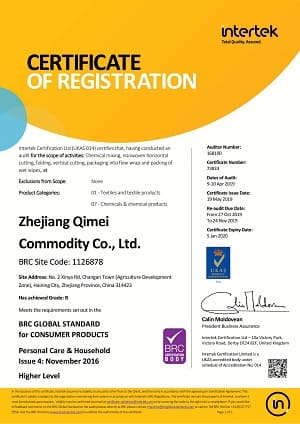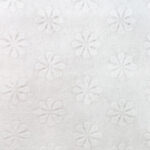Spunlace onwoven Fabric Type: Polyester,Poly -Viscose Blend material, Bamboo Fiber, Wood Pulp(Flushable), Cotton or Soy Fiber(Biodegradable)
Flat or Textured( Your Own LOGO is available)
Grammage: 30-80gsm
1/10/30/80/100/120/160 pcs/pack
The size of dusting wipes can vary depending on the brand and intended use of the product. Generally, dusting wipes come in a range of sizes, from small individual wipes to larger wipes that can cover a larger area.
Small individual dusting wipes are often designed to be used once and then discarded. They are typically small enough to be carried in a purse, bag, or pocket for on-the-go cleaning and may be packaged in small sachets or resealable packs.
Larger dusting wipes may be designed for multiple uses and may come in canisters or tubs. These wipes are often larger in size and may be designed to clean larger surfaces or cover a larger area.
The exact size of dusting wipes can vary, but they are typically designed to be easy to use and handle, regardless of their intended use. Some dusting wipes may also be textured or have a specific shape or design to improve their dusting performance on certain types of surfaces.
nobiles@live.cn
the formulation of Dusting Wipes
The formulation of dusting wipes can vary depending on the brand and intended use of the product. However, most dusting wipes are designed to pick up and trap dust, dirt, and other small particles from surfaces without scratching or damaging them.
Typically, the formulation of dusting wipes includes a combination of cleaning agents and additives that help to improve their dusting performance. Some common ingredients that may be found in the formulation of dusting wipes include:
Surfactants: These are cleaning agents that help to break down and remove dirt and dust from surfaces.
Emulsifiers: These are agents that help to suspend dirt and dust particles in the liquid solution of the wipe, allowing them to be easily wiped away.
Antistatic agents: These are additives that help to reduce the static charge on surfaces, making it easier to remove dust and preventing it from resettling.
Fragrances: These are often added to dusting wipes to provide a fresh, clean scent.
Preservatives: These are added to prevent the growth of bacteria or mold in the wipe, ensuring that the product remains effective and safe to use.
Some dusting wipes may also contain natural or plant-based ingredients, such as essential oils, to provide additional cleaning and dusting benefits.
The exact formulation of dusting wipes can vary depending on the brand and specific product, so it is important to read the label and product information to determine the ingredients and potential allergens present in the product.
nobiles@live.cn
what is Dusting Wipes
Dusting wipes are a type of cleaning product designed to remove dust and other small particles from surfaces. They are typically made of a soft, non-abrasive material that can be used on a variety of surfaces, including wood, furniture, electronics, and other household items.
Dusting wipes are pre-moistened with a cleaning solution that is designed to pick up and trap dust and dirt, making them an effective alternative to traditional feather dusters or dry cloths. They are often disposable, making them convenient for quick cleanups and easy to use without the need for additional cleaning products.
Dusting wipes are available in a range of sizes and formats, from individual wipes to larger canisters or tubs. They may also be scented or unscented, depending on the brand and product. Some dusting wipes may also contain natural or plant-based ingredients for additional cleaning benefits.
1. Plastic resealable bag: This is the most common type of wet wipe packaging. It is made of plastic and has a resealable strip on top to keep the wipes fresh and moist.
2. Flip-top lid container: This type of packaging consists of a plastic container with a flip-top lid that can be opened and closed to access the wipes.
3. Soft pack with plastic flip-top lid: Similar to the flip-top lid container, this packaging comes in a soft pack and has a plastic flip-top lid for easy access.
4. Pop-up dispenser: This type of packaging features a pop-up dispensing mechanism that pulls out one wipe at a time.
5. Travel pack: A small packaging designed for on-the-go use, it often comes with a plastic snap closure.
6. Single-use packaging: These wet wipes come in small, sealed packets which are convenient for travel or outdoor activities.
7. Refill bag: This larger size packaging is designed to refill other wet wipe containers, and usually has a resealable opening.
Surfactants: These are cleaning agents that help to break down and remove dirt and dust from surfaces.
Emulsifiers: These are agents that help to suspend dirt and dust particles in the liquid solution of the wipe, allowing them to be easily wiped away.
Antistatic agents: These are additives that help to reduce the static charge on surfaces, making it easier to remove dust and preventing it from resettling.
Fragrances: These are often added to dusting wipes to provide a fresh, clean scent.
Preservatives: These are added to prevent the growth of bacteria or mold in the wipe, ensuring that the product remains effective and safe to use.
ISO 9001: This is a standard for Quality Management Systems (QMS). It provides guidelines for the development, implementation, and maintenance of a QMS to ensure that products meet customer and regulatory requirements.
ISO 14001: This is a standard for Environmental Management Systems (EMS). It provides guidelines for the development, implementation, and maintenance of an EMS to ensure that products are produced in an environmentally responsible manner.
Forest Stewardship Council (FSC) certification: This certification ensures that the wood or paper products used in the production of the wipes come from responsibly managed forests.
Green Seal certification: This certification indicates that the product meets rigorous environmental and performance standards.













